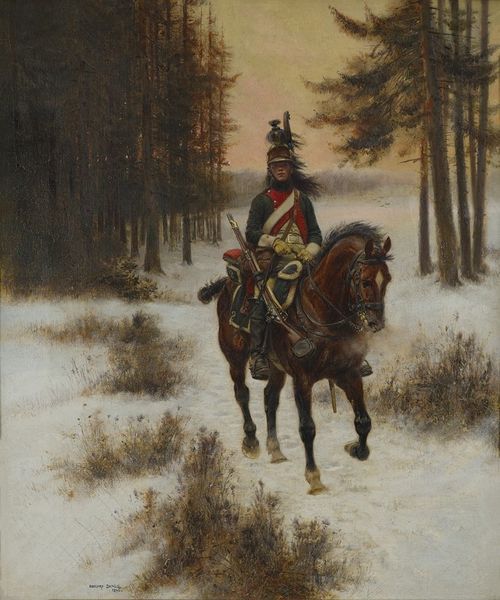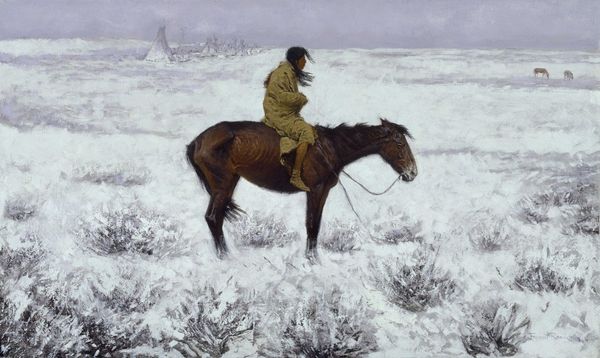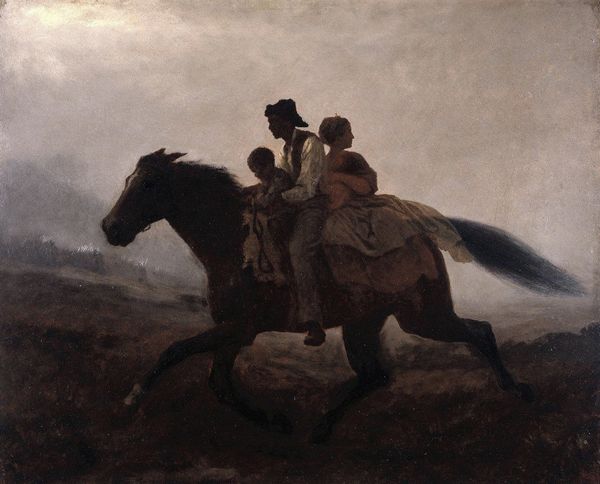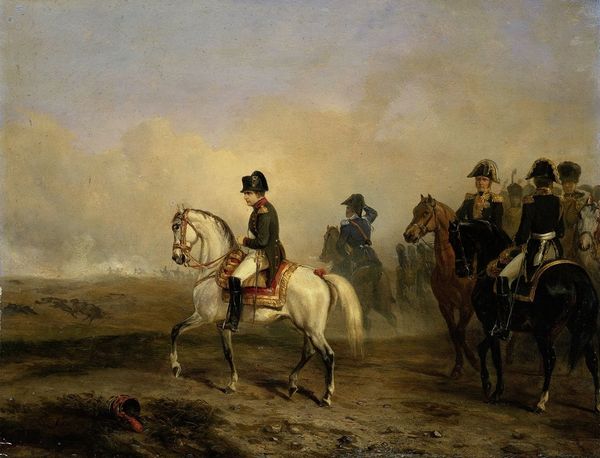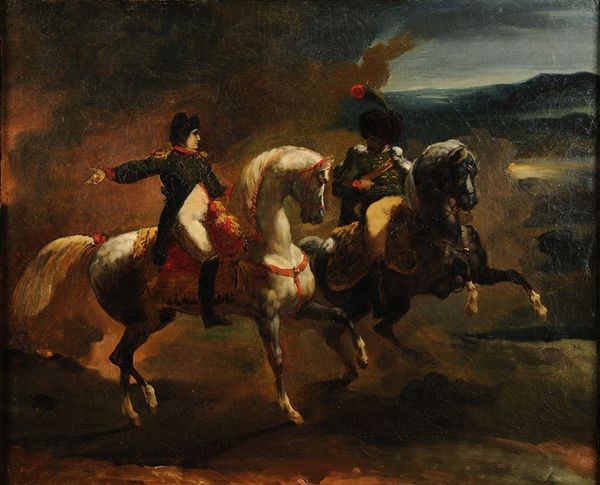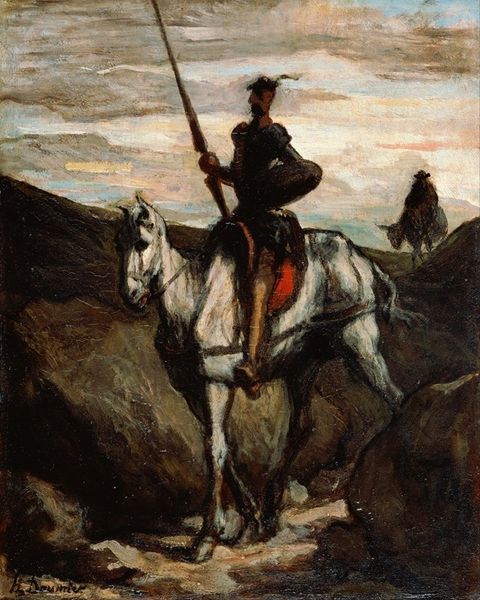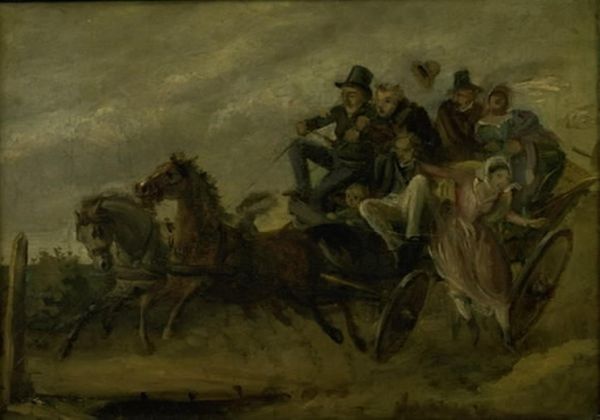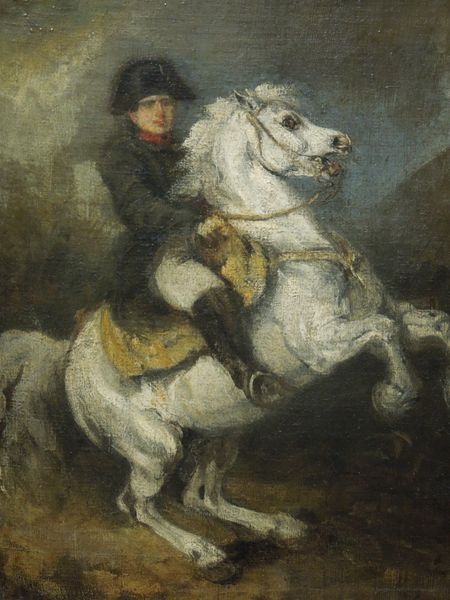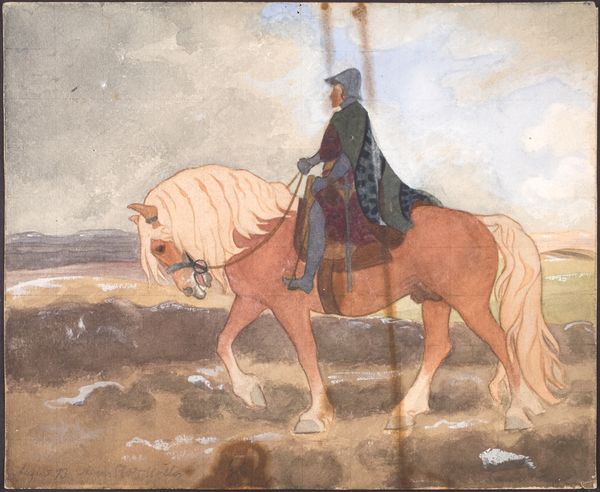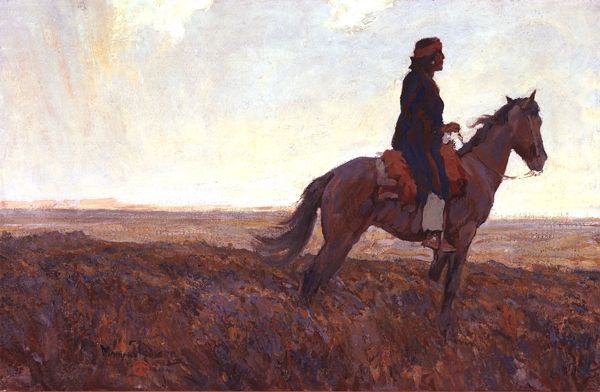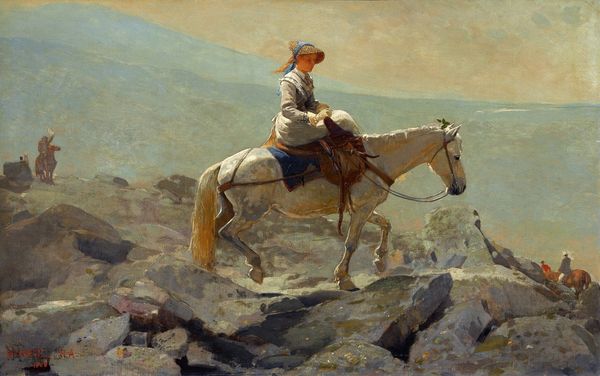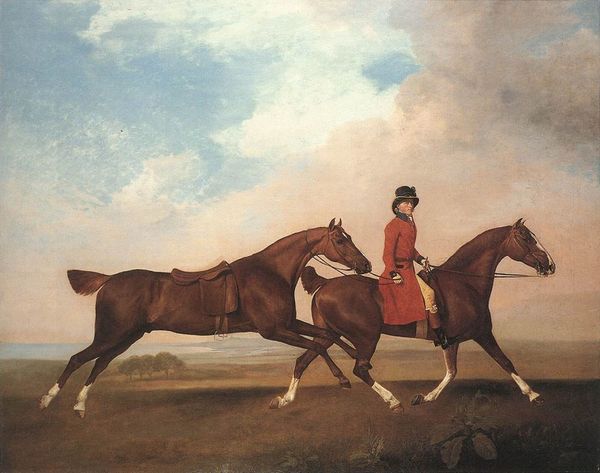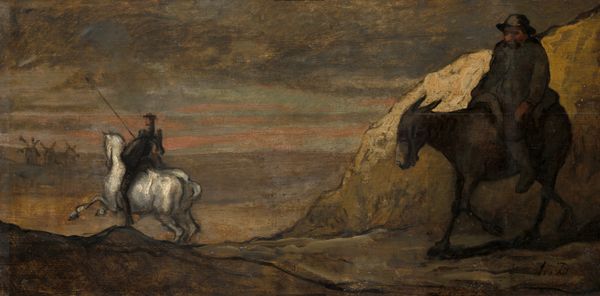
Copyright: Public Domain: Artvee
Curator: Gustave Courbet's "Hunter on Horseback," painted around 1864, presents a stark figure traversing a wintery landscape. It's oil on canvas. Editor: It feels desolate, doesn't it? The muted colors and heavy atmosphere suggest a real isolation. Both man and beast appear burdened, weary almost. Curator: Courbet, you see, often depicted the realities of rural life, avoiding idealization. He was incredibly involved in the politics surrounding art production and consumption at the time. This painting challenges romanticized views, reflecting a societal shift towards realism, with increased urbanization leading to new representations of "nature." The art market started needing art showing “real life”. Editor: That’s a compelling point, viewing the hunter as representing the impact of socioeconomic shifts on identity. Looking at his attire, there’s an understated masculinity in the practicality of his dress. Courbet captures a sense of stoicism, not necessarily of a triumphant hunter, but a working individual enduring harsh conditions. Curator: Precisely. The muted tones and brushstrokes also contribute. Look at how the background is rendered with minimal detail, almost as a flat plane of cold. It brings the social setting and rural economic precarity sharply into view, right? Courbet was challenging established artistic institutions. Editor: Right, and it's essential to think about Courbet’s socio-political convictions here. Given his support for social reform, his art becomes a form of advocacy. This isn’t just a painting; it's a statement about class, labor, and the representation of marginalized groups in art. Curator: It brings forth the tensions between urban-elite artistic sensibilities and the working class' visual identity during that period. Courbet consistently aimed to subvert the norms of representation to reflect a changing socio-political landscape. Editor: Examining “Hunter on Horseback" provides a vital lens into societal representation during an era of transition, demonstrating Courbet’s engagement with class and cultural politics. Curator: Exactly! It underlines the artwork's role as a historical marker, displaying shifts in values and aesthetic sensibilities.
Comments
No comments
Be the first to comment and join the conversation on the ultimate creative platform.
